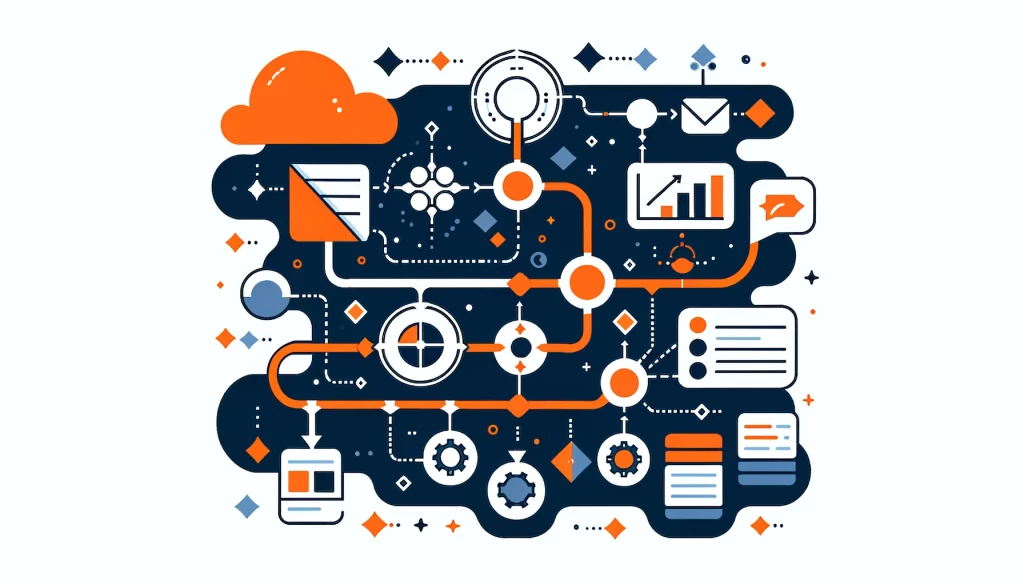
Data Lineage

Data lineage is a critical concept for organizations that rely on data to drive their operations. It shows where data came from, how it changed, and where it went in different business steps. In essence, lineage is the “line of descent.”
Businesses can use it to track errors in data processing. They can also make changes to processes with low risk. Additionally, they can migrate systems confidently. It also helps create a detailed data mapping framework.
The Importance of Data Lineage in Modern Business
Data lineage offers numerous benefits to organizations, from IT departments to business units.
By providing a clear and comprehensive view of info’s journey, lineage improves understanding of information and confidence across the organization. It enables business users to make informed decisions based on accurate, reliable resources.
For example, a financial institution used lineage to trace the source of discrepancies in its regulatory reporting.
The institution found a data error by tracking how the data moved to the final report. This error was causing inaccuracies. With this insight, they were able to correct the issue and ensure compliance with regulatory requirements.
Data lineage also saves IT teams significant time and effort by enabling granular impact analyzing when making data updates.
IT teams can save time by quickly assessing the impact of changes. This saves them from having to analyze downstream systems manually. As a result, manual analysis time can be reduced by up to 98%.
Compliance with Rules and Regulations Made Easier
In today’s stringent regulatory environment, data traceability is essential for compliance purposes. However, mapping lineage for regulatory reasons can be time-consuming and complex. If done incorrectly, it can lead to costly fines and penalties.
Data lineage simplifies this process by documenting how data moves through various systems from source to destination. It provides a clear audit trail for all data transformations, enabling risk management teams to ensure compliance with ease.
A healthcare provider leveraged lineage to ensure compliance with HIPAA regulations.
The provider mapped how PHI moves through its systems to find security risks and put in safeguards. This proactive approach helped the provider avoid costly penalties and maintain patient trust.
A Closer Look at Types of Data Lineage
There are several common approaches to lineage, each serving specific purposes.
Cross-system lineage provides a high-level view of flow, showing where information originates and where it goes. This method is great for showing how process changes affect outcomes, finding problems with methods, and discovering similar processes.
End-to-end column lineage, on the other hand, offers a more detailed view. It monitors data movement in the BI environment. The tracking starts when data enters the system. It continues until the data is used for reporting and analytics.
This method helps to analyze the effects of column changes in source systems. It also helps to find the reasons for reporting errors. Additionally, it helps to get ready for regulatory audits.
Inner-system tracks the lineage within a specific ETL process, report, or database object, all the way down to columns. This means it provides a detailed view of how data is connected and flows within a specific system.
This level of detail can be useful for troubleshooting issues, auditing data quality, or making changes to the system. This granular view enables visibility into complex processes, allowing teams to understand each column’s logic and data flow.
Step-by-Step Implementation of a Data Lineage Strategy
Regarding implementing a lineage strategy, timing is crucial. BI teams should be proactive in recognizing when a lineage solution becomes necessary. Here’s a step-by-step guide to help you start:
Step 1: Identify Your Priorities and Use Cases
Begin by determining how you currently use or plan to use data lineage. Consider use cases such as impact analysis, root cause analysis, explainability, regulatory compliance, and business insights.
Clearly defining your priorities will help guide your decision-making process.
Step 2: Secure Management Approval
Once you have clarified your use cases, present them to management to obtain approval for a data lineage solution. Be ready to explain how this solution will help with each situation and save time and money for the organization.
Step 3: Evaluate Data Lineage Options
With management’s approval secured, it’s time to evaluate the available data lineage solutions. Use your priorities and use cases as the primary criteria for narrowing down your options.
Consider factors such as compatibility with existing technologies, ease of use, and the dimensions of lineage displayed.
Step 4: Select and Implement the Solution
After careful evaluation, select the data lineage solution that best meets your organization’s needs. Prepare to see the benefits of having a clear data lineage plan, such as understanding data better and complying with regulations.
Real-World Examples of Successful Data Lineage Implementation
Many organizations have successfully implemented data lineage to drive business value. A global e-commerce company used data lineage to optimize its supply chain operations.
By tracing the flow of inventory data from suppliers to warehouses and ultimately to customers, the company identified inefficiencies and implemented process improvements.
This led to reduced inventory costs, faster order fulfillment, and improved customer satisfaction.
In the telecommunications industry, a major provider leveraged lineage to improve its customer retention efforts.
By mapping customer data across various systems, including billing, customer service, and marketing, the provider gained a comprehensive view of customer interactions.
This insight enabled targeted retention campaigns, resulting in a significant reduction in customer churn.
The Future of Data Lineage: Emerging Trends and Opportunities
As data volumes continue to grow and regulatory requirements evolve, the importance of data lineage will only increase.
Emerging trends and technologies, such as artificial intelligence and machine learning, offer new opportunities for enhancing data lineage capabilities.
For example, machine learning algorithms can be trained to automatically detect and classify data transformations, reducing the manual effort required for data lineage mapping.
AI-powered analytics can also provide intelligent recommendations for optimizing processes based on lineage insights.
Companies use cloud computing and multiple cloud systems. Data lineage is important for keeping data consistent and compliant across different systems.
Cloud-native data lineage solutions help organizations track their data’s journey, no matter where it is stored.
Conclusion
Organizations that prioritize data lineage gain a competitive edge by making informed decisions based on reliable, accurate data.
They can respond quickly to changing business needs, ensure regulatory compliance, and drive innovation.
Creating a strategy requires careful planning to make sure it supports the business goals. This means identifying key individuals in the organization who will be impacted by the data lineage plan.
Additionally, it involves deciding how much detail to include in the lineage strategy.
To create a data lineage strategy, you need to know how data is collected, stored, and used in your organization. This might mean checking the data for any missing or wrong information, and making sure the sources are reliable.
The next step is to create a plan for putting the data tracking into action. This involves deciding how to track data and understanding the current data situation. This means figuring out what tools and technologies will be used to keep track of where data comes from. It also involves creating processes to make sure data lineage is managed and maintained properly.
When implementing a lineage strategy, it’s important to keep key stakeholders informed and updated on the progress. This will ensure that the strategy aligns with the business goals and objectives. It will also ensure that any issues are addressed promptly.
To successfully implement a data lineage strategy, it is important to take a strategic and collaborative approach. This involves aligning the strategy with the organization’s business goals and making sure it is effectively implemented and maintained.
The future of lineage looks bright. Emerging technologies and trends offer exciting opportunities for enhancing data lineage capabilities and driving business success.
